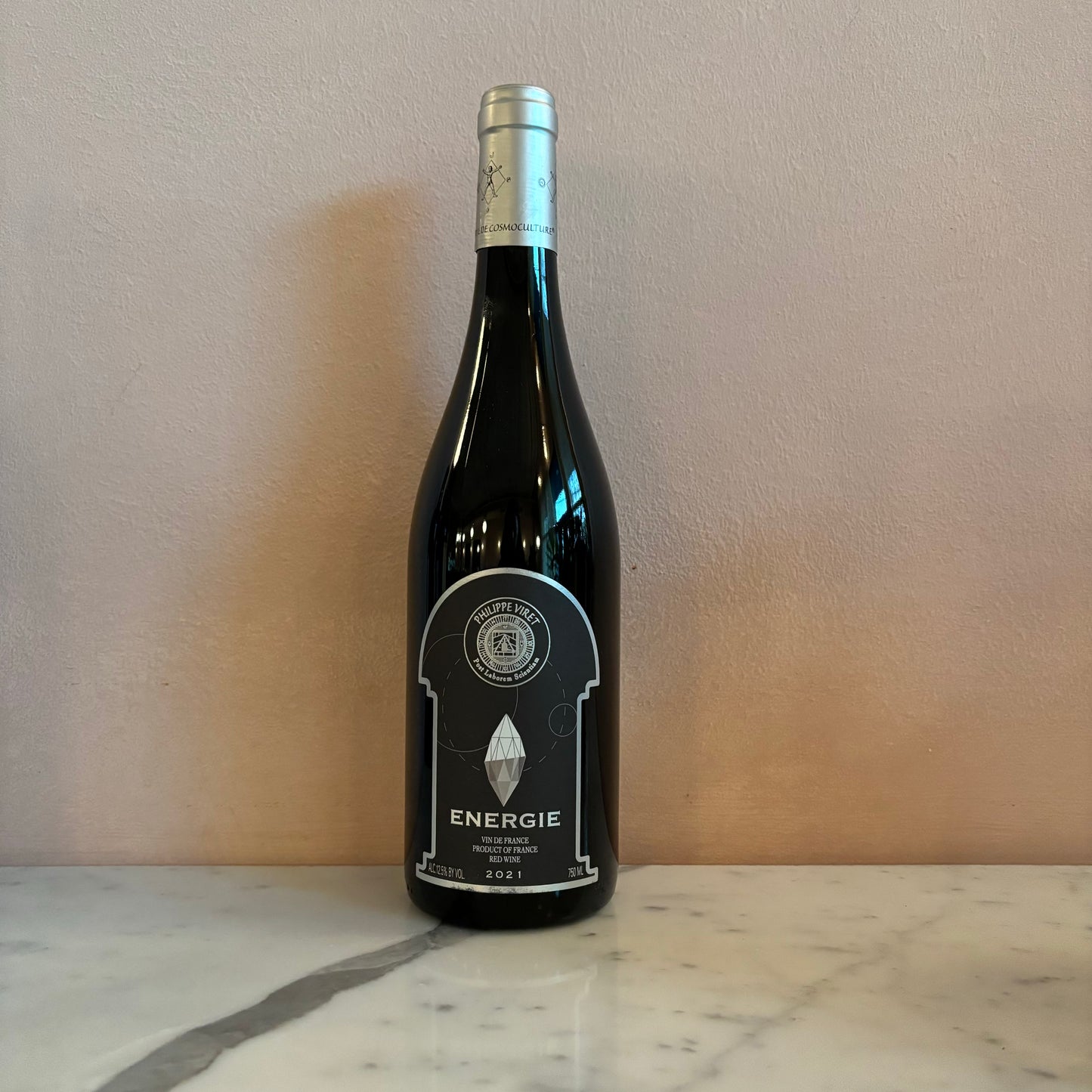Domaine Viret
Domaine Viret "Energie" VdF Rouge, Rhône Valley, France 2021
Domaine Viret "Energie" VdF Rouge, Rhône Valley, France 2021
Low stock
Couldn't load pickup availability
FROM ROSENTHAL:
THE WINE: Built primarily from young-vines Syrah with a splash of Mourvèdre and tiny sprinklings of old Rhône varieties like Picpoul Noir, Vaccarèse, Muscardin, and Counoise, “Energie” is vinified and aged in a combination of cement and steel tanks for one year with no added sulfur. The long but gentle infusion-method of extraction gives this wine great clarity of line, with pure, ringing acidity and a tasteful spiciness that speaks more of the northern Rhône than the frequently coarse Syrah of these southerly zones; its name could hardly be more apt.
THE PRODUCER: Atop a hill in Saint-Maurice-sur-Eygues, in the southern Côtes-du-Rhône, a structure looms at once imposing and beautiful. Constructed of rectangular earthen-yellow stones broader than a human’s wingspan, it is flanked on the entirety of its left side by an Ionic-columned portico, and punctuated on its upper level by three large circle-top windows. This is Domaine Viret, and it is only the beginning of the story of one of southern France’s most fascinating and inscrutable winegrowers.
Philippe, who constructed the winery alongside his father Alain in the late 1990s, immediately began humanizing what our weary brains had been struggling to process. These huge wall-stones were pulled from a local quarry—the same source the Romans used in constructing the famous Pont du Gard (the Viret property itself is an old Roman site)—and were numbered such that the winery could be constructed with the stones in the same configuration as when they were excavated. Their remarkable thickness allows for impeccable temperature regulation without technological interference—a boon in such a warm climate as the southern Rhône. Also, upon closer examination, the structure was not perched fully atop the hill but was built into the side of its peak, thus allowing everything to move via gravity through the winery’s various tiers from the moment the grapes are brought in. This was beginning to feel relatable, familiar even, but we had yet to begin discussing what Philippe is perhaps most famous for: Cosmoculture, a system of farming of which he is the only practitioner and for which he holds an actual patent…
Cosmoculture employs knowledge of the earth’s energy fields, known as telluric currents, in deciding where to plant, how to plant, when to harvest, and many other viticultural activities, as well as dictating the construction and operation of the winery itself. A well-established if not widely exposed field of inquiry, knowledge of telluric currents informs research into fault zones, ground-water sources (Viret is built atop a large underground spring, in fact), geothermal activity, and many more areas. Insofar as it involves homeopathic vineyard treatments, polycultural principles (Viret encompasses 60 total hectares of which 35 are planted to vines), and attention to lunar cycles, Cosmoculture can be seen as a sort of extension of biodynamics. And, like biodynamics, Cosmoculture involves practices which may seem at first arcane or esoteric but are in fact connected to ancient wisdom—to knowledge humans cultivated and transmitted for millennia before we allowed technology to begin to supplant it. Of course, this would all threaten to become grand eco-philosophical performance art if Philippe’s wines were simply ordinary; thankfully, however, they are among the most soulful and evocative wines in the entire region.


